A Spatial Downscaling Approach for WindSat Satellite Sea Surface Wind Based on Generative Adversarial Networks and Dual Learning Scheme
Abstract
:1. Introduction
- We present a spatial downscaling approach for satellite SSW based on generative adversarial networks and dual learning schemes, taking WindSat as a typical example. Comprehensive experiments conducted demonstrate the effectiveness of the proposed downscaling network.
- In the dual learning scheme, a primal task to reconstruct HR images and a dual task to estimate the degradation kernels are simultaneously learned by minimizing the loss in a closed loop, thus yielding better performance. By integrating the dual learning scheme into the GAN structure as the generator, the downscaling performance is further improved by introducing an additional constraint to reduce the solution space. The model adaptation strategy of the proposed approach can improve the downscaling performance on the unpaired LR SSW.
2. Study Areas and Data
2.1. Study Areas
2.2. Sea Surface Wind Data
2.2.1. Buoy Measurements
2.2.2. Satellite Observations
3. Methodology
3.1. Overview
3.2. Data Preprocessing
3.3. Downscaling Network Architecture
3.3.1. Generative Adversarial Network Structure
3.3.2. Generator Based on Dual Learning
3.3.3. Discriminator Architecture
3.3.4. Loss Function and Model Training
| Algorithm 1: Algorithm for Higher Resolution with Unpaired Data. |
| 1 Input 1: The wind field data (0.25°) as LR: Unpaired data {yi}; |
| 2 Input 2: The synthetic data as LR (2°) and HR (0.25°): Paired data {xi, yi}; |
| 3 Load the pretrained models: generator (G), dual regression (Dual) and discriminator (Dis); |
| 4 Whilenot convergentdo |
| 5 UnpairedTraining = True if random(0, 1) < λU, vice versa; |
| 6 ifnot UnpairedTrainingthen |
| 7 //Update the Dis model |
| 8 Update Dis by minimizing the objective: ; |
| 9 //Update the G model |
| 10 Update G by minimizing the objective: ; |
| 11 //Update the Dual model |
| 12 Update Dual by minimizing the objective: ; |
| 13 else |
| 14 //Update the Dual model |
| 15 Update Dual by minimizing the objective:; |
| 16 end |
| 17 end |
4. Experiments and Results
4.1. Evaluation Metrics
4.2. Reference Methods
- Cubic convolution interpolation [43] is a classical technique for resampling discrete data, the accuracy of which is between that of linear interpolation and that of cubic splines with the appropriate boundary conditions and constraints on the interpolation kernel. We adopted the cubic convolution interpolation as one of the reference methods since it is widely used to validate the performance of super-resolution.
- DeepSD [20] is an augmented stacked super-resolution convolutional neural network framework for statistical downscaling of climate variables and earth system model simulations proposed by Vandal et al. in 2017 and has achieved a downscaling factor of 8x. It is the first research of climate downscaling by the deep learning-based super-resolution technique to the best of our knowledge, and has provided NASA Earth Exchange (NEX) an alternative to generate the downscaled products at high resolutions, thus being selected as a method for comparison.
- Adversarial DeepSD is a reference method to evaluate the effectiveness of GAN, which takes DeepSD as the generator and the same discriminator network as the proposed method in this paper.
- Dual regression networks [37] is a dual regression scheme proposed by Guo et al. in 2020 by introducing an additional constraint on LR data to reduce the possible function space. It not only learns the mapping from LR to HR images but also learns the extra mapping that estimates the down-sampling kernel for reconstructing LR images, thus forming a closed loop for better performance. DRN is the base network for the presented SSW downscaling approach in this paper, which is also used for performance comparison.
4.3. Experimental Setup
- Experiment 1: The synthetic experiments on the constructed paired LR and HR SSW. Since it is common that the downscaling evaluation suffers from a lack of ground truth, synthetic experiments are usually conducted by upscaling higher spatial resolution products, which are then taken as input, and comparing the downscaled results with original products [44]. In this paper, we first obtain the LR SSW from the original 0.25° SSW with the commonly used bicubic interpolation. Models, including DeepSD, DRN, adversarial DeepSD, and the proposed network based on GAN and dual learning, are trained, respectively, with the LR-HR training dataset, and the downscaling results from the trained models are validated on the test dataset with the evaluation metrics including RMSE and R2, as well as PSNR and SSIM.
- Experiment 2: Downscaling experiments to generate higher resolution SSW data without HR ground truth. In real scenes, HR ground truths are usually unavailable. Therefore, we adopted the 0.25° SSW as LR data to form an unpaired dataset and applied the adaptation for our model based on GAN and dual learning, as shown in Algorithm 1 in Section 3.3.4, together with the synthetic LR-HR dataset. In this experiment, we generated SSW at 0.03125° (a downscaling factor of 8×) with the default configuration of basic blocks. Due to the lack of the HR SSW images, we only present the RMSE and R2 against buoy measurements for the downscaling accuracy validation and comparison.
- Experiment 3: The downscaling capacity to generate higher resolution. Based on experiment 2, we further increased the basic blocks in the generator of the network to achieve a downscaling factor of 16× (0.015625° spatial resolution) with comparable accuracy.
4.4. Downscaling Results
4.4.1. Results on Synthetic LR-HR SSW
4.4.2. Results on LR SSW
5. Discussion
5.1. Downscaling Performance
5.2. Computational Efficiency
5.3. Data Concern of Downscaling Network
6. Conclusions
Author Contributions
Funding
Institutional Review Board Statement
Informed Consent Statement
Data Availability Statement
Conflicts of Interest
References
- Liu, G.; Yang, X.; Li, X.; Zhang, B.; Pichel, W.; Li, Z.; Zhou, X. A systematic comparison of the effect of polarization ratio models on sea surface wind retrieval from C-band synthetic aperture radar. IEEE J.-Stars. 2013, 6, 1100–1108. [Google Scholar] [CrossRef]
- Zhang, K.; Xu, X.; Han, B.; Mansaray, L.R.; Guo, Q.; Huang, J. The influence of different spatial resolutions on the retrieval accuracy of sea surface wind speed with C-2PO models using full polarization C-band SAR. IEEE Tans. Geosci. Remote 2017, 55, 5015–5025. [Google Scholar] [CrossRef]
- Kim, H.; Heo, K.; Kim, N.; Kwon, J. Hindcasts of Sea Surface Wind around the Korean Peninsula Using the WRF Model: Added Value Evaluation and Estimation of Extreme Wind Speeds. Atmosphere 2021, 12, 895. [Google Scholar] [CrossRef]
- Hu, T.; Li, Y.; Li, Y.; Wu, Y.; Zhang, D. Retrieval of Sea Surface Wind Fields Using Multi-Source Remote Sensing Data. Remote Sens. 2020, 12, 1482. [Google Scholar] [CrossRef]
- Kim, G.; Seo, K.; Chen, D. Climate change over the Mediterranean and current destruction of marine ecosystem. Sci. Rep. 2019, 9, 18813. [Google Scholar] [CrossRef]
- Vogelzang, J.; Stoffelen, A.; Lindsley, R.D.; Verhoef, A.; Verspeek, J. The ASCAT 6.25-km wind product. IEEE J.-Stars. 2017, 10, 2321–2331. [Google Scholar] [CrossRef]
- Shao, W.; Zhang, Z.; Li, X.; Wang, W. Sea surface wind speed retrieval from TerraSAR-X HH polarization data using an improved polarization ratio model. IEEE J.-Stars. 2016, 9, 4991–4997. [Google Scholar] [CrossRef]
- Atlas, R.; Hoffman, R.N.; Ardizzone, J.; Leidner, S.M.; Jusem, J.C.; Smith, D.K.; Gombos, D. A cross-calibrated, multiplatform ocean surface wind velocity product for meteorological and oceanographic applications. Am. Meteorol. Soc. 2011, 92, 157–174. [Google Scholar] [CrossRef]
- Monahan, A.H. Can we see the wind? Statistical downscaling of historical sea surface winds in the subarctic northeast Pacific. J. Clim. 2012, 25, 1511–1528. [Google Scholar] [CrossRef]
- Herrmann, M.; Ngo-Duc, T.; Trinh-Tuan, L. Impact of climate change on sea surface wind in Southeast Asia, from climatological average to extreme events: Results from a dynamical downscaling. Clim. Dynam. 2020, 54, 2101–2134. [Google Scholar] [CrossRef]
- Xu, Y. Estimates of changes in surface wind and temperature extremes in southwestern Norway using dynamical downscaling method under future climate. Weather. Clim. Extrem. 2019, 26, 100234. [Google Scholar] [CrossRef]
- Chamberlain, M.A.; Sun, C.; Matear, R.J.; Feng, M.; Phipps, S.J. Downscaling the climate change for oceans around Australia. Geosci. Model Dev. 2012, 5, 1177–1194. [Google Scholar] [CrossRef] [Green Version]
- He, L.; Fablet, R.; Chapron, B.; Tournadre, J. Learning-based emulation of sea surface wind fields from numerical model outputs and SAR data. IEEE J.-Stars. 2015, 8, 4742–4750. [Google Scholar] [CrossRef] [Green Version]
- Goubanova, K.; Echevin, V.; Dewitte, B.; Codron, F.; Takahashi, K.; Terray, P.; Vrac, M. Statistical downscaling of sea-surface wind over the Peru–Chile upwelling region: Diagnosing the impact of climate change from the IPSL-CM4 model. Clim. Dynam. 2011, 36, 1365–1378. [Google Scholar] [CrossRef]
- Chávez-Arroyo, R.; Lozano-Galiana, S.; Sanz-Rodrigo, J.; Probst, O. Statistical–dynamical downscaling of wind fields using self-organizing maps. Appl. Therm. Eng. 2015, 75, 1201–1209. [Google Scholar] [CrossRef]
- Schoetter, R.; Hidalgo, J.; Jougla, R.; Masson, V.; Rega, M.; Pergaud, J. A Statistical–Dynamical Downscaling for the Urban Heat Island and Building Energy Consumption—Analysis of Its Uncertainties. J. Appl. Meteorol. Clim. 2020, 59, 859–883. [Google Scholar] [CrossRef] [Green Version]
- Wang, H.; Juang, J. Retrieval of Ocean Wind Speed Using Super-Resolution Delay-Doppler Maps. Remote Sens. 2020, 12, 916. [Google Scholar] [CrossRef] [Green Version]
- Stengel, K.; Glaws, A.; Hettinger, D.; King, R.N. Adversarial super-resolution of climatological wind and solar data. Proc. Natl. Acad. Sci. USA 2020, 117, 16805–16815. [Google Scholar] [CrossRef]
- Díaz Vico, D.; Torres Barrán, A.; Omari, A.; Dorronsoro, J.R. Deep neural networks for wind and solar energy prediction. Neural Process. Lett. 2017, 46, 829–844. [Google Scholar] [CrossRef]
- Vandal, T.; Kodra, E.; Ganguly, S.; Michaelis, A.; Nemani, R.; Ganguly, A.R. Deepsd: Generating high resolution climate change projections through single image super-resolution. In Proceedings of the 23rd ACM Sigkdd International Conference on Knowledge Discovery and Data Mining, Halifax, NS, Canada, 13–17 August 2017; pp. 1663–1672. [Google Scholar]
- Zhang, S.; Li, X. Future projections of offshore wind energy resources in China using CMIP6 simulations and a deep learning-based downscaling method. Energy 2021, 217, 119321. [Google Scholar] [CrossRef]
- Höhlein, K.; Kern, M.; Hewson, T.; Westermann, R. A comparative study of convolutional neural network models for wind field downscaling. Meteorol. Appl. 2020, 27, e1961. [Google Scholar] [CrossRef]
- Kurinchi-Vendhan, R.; Lütjens, B.; Gupta, R.; Werner, L.; Newman, D.; Low, S. WiSoSuper: Benchmarking Super-Resolution Methods on Wind and Solar Data. arXiv 2021, arXiv:2109.08770. [Google Scholar]
- Jing, C.; Niu, X.; Duan, C.; Lu, F.; Di, G.; Yang, X. Sea surface wind speed retrieval from the first chinese gnss-r mission: Technique and preliminary results. Remote Sens. 2019, 11, 3013. [Google Scholar] [CrossRef] [Green Version]
- Bhate, J.; Munsi, A.; Kesarkar, A.; Kutty, G.; Deb, S.K. Impact of assimilation of satellite retrieved ocean surface winds on the tropical cyclone simulations over the north Indian Ocean. Earth Space Sci. 2021, 8, e01517. [Google Scholar] [CrossRef]
- Gentile, E.S.; Gray, S.L.; Barlow, J.F.; Lewis, H.W.; Edwards, J.M. The Impact of Atmosphere–Ocean–Wave Coupling on the Near-Surface Wind Speed in Forecasts of Extratropical Cyclones. Bound.-Lay. Meteorol. 2021, 180, 105–129. [Google Scholar] [CrossRef]
- Valiente, N.G.; Saulter, A.; Edwards, J.M.; Lewis, H.W.; Castillo Sanchez, J.M.; Bruciaferri, D.; Bunney, C.; Siddorn, J. The impact of wave model source terms and coupling strategies to rapidly developing waves across the north-west European shelf during extreme events. J. Mar. Sci. Eng. 2021, 9, 403. [Google Scholar] [CrossRef]
- Center, NDB. Does NDBC Adjust C-MAN and Buoy Wind Speed Observations to a Standard Height? 2008, Volume 2021. Available online: https://www.ndbc.noaa.gov/adjust_wind.shtml (accessed on 3 February 2022).
- Monaldo, F.M. Evaluation of WindSat wind vector performance with respect to QuikSCAT estimates. IEEE Trans. Geosci. Remote 2006, 44, 638–644. [Google Scholar] [CrossRef]
- Zhang, T.; Li, X.; Feng, Q.; Ren, Y.; Shi, Y. Retrieval of sea surface wind speeds from Gaofen-3 full polarimetric data. Remote Sens. 2019, 11, 813. [Google Scholar] [CrossRef] [Green Version]
- Zheng, M.; Li, X.; Sha, J. Comparison of sea surface wind field measured by HY-2A scatterometer and WindSat in global oceans. J. Oceanol. Limnol. 2019, 37, 38–46. [Google Scholar] [CrossRef]
- Meissner, T.; Ricciardulli, L.; Manaster, A. Tropical Cyclone Wind Speeds from WindSat, AMSR and SMAP: Algorithm Development and Testing. Remote Sens. 2021, 13, 1641. [Google Scholar] [CrossRef]
- Manaster, A.; Ricciardulli, L.; Meissner, T. Tropical Cyclone Winds from WindSat, AMSR2, and SMAP: Comparison with the HWRF Model. Remote Sens. 2021, 13, 2347. [Google Scholar] [CrossRef]
- Wentz, F.J.; Ricciardulli, L.; Gentemann, C.; Meissner, T.; Hilburn, K.A.; Scott, J. Remote Sensing Systems Coriolis WindSat Environmental Suite on 0.25 deg Grid, Version 7.0.1; Remote Sensing Systems: Santa Rosa, CA, USA, 2013; Volume 2021, Available online: https://www.remss.com/missions/windsat/ (accessed on 3 February 2022).
- Goodfellow, I.; Pouget-Abadie, J.; Mirza, M.; Xu, B.; Warde-Farley, D.; Ozair, S.; Courville, A.; Bengio, Y. Generative adversarial nets. Adv. Neural Inf. Process. Syst. 2014, 27, 2672–2680. [Google Scholar]
- Fang, B.; Pan, L.; Kou, R. Dual Learning-Based Siamese Framework for Change Detection Using Bi-Temporal VHR Optical Remote Sensing Images. Remote Sens. 2019, 11, 1292. [Google Scholar] [CrossRef] [Green Version]
- Guo, Y.; Chen, J.; Wang, J.; Chen, Q.; Cao, J.; Deng, Z.; Xu, Y.; Tan, M. Closed-loop matters: Dual regression networks for single image super-resolution. In Proceedings of the IEEE/CVF Conference on Computer Vision and Pattern Recognition, Seattle, WA, USA, 13–19 June 2020; pp. 5407–5416. [Google Scholar]
- Zhang, Y.; Li, K.; Li, K.; Wang, L.; Zhong, B.; Fu, Y. Image super-resolution using very deep residual channel attention networks. In Proceedings of the European Conference on Computer Vision (ECCV), Munich, Germany, 8–14 September 2018; pp. 286–301. [Google Scholar]
- Ledig, C.; Theis, L.; Huszár, F.; Caballero, J.; Cunningham, A.; Acosta, A.; Aitken, A.; Tejani, A.; Totz, J.; Wang, Z. Photo-realistic single image super-resolution using a generative adversarial network. In Proceedings of the IEEE conference on computer vision and pattern recognition, Honolulu, HI, USA, 21–26 July 2017; pp. 4681–4690. [Google Scholar]
- Park, S.; Son, H.; Cho, S.; Hong, K.; Lee, S. Srfeat: Single image super-resolution with feature discrimination. In Proceedings of the European Conference on Computer Vision (ECCV), Munich, Germany, 8–14 September 2018; pp. 439–455. [Google Scholar]
- Jiang, Z.; Huang, Y.; Hu, L. Single image super-resolution: Depthwise separable convolution super-resolution generative adversarial network. Appl. Sci. 2020, 10, 375. [Google Scholar] [CrossRef] [Green Version]
- Wang, Z.; Chen, J.; Hoi, S.C. Deep learning for image super-resolution: A survey. IEEE Trans. Pattern Anal. Mach. Intell. 2020, 43, 3365–3387. [Google Scholar] [CrossRef] [Green Version]
- Keys, R. Cubic convolution interpolation for digital image processing. IEEE Trans. Acoust. Speech Signal Process. 1981, 29, 1153–1160. [Google Scholar] [CrossRef] [Green Version]
- He, X.; Chaney, N.W.; Schleiss, M.; Sheffield, J. Spatial downscaling of precipitation using adaptable random forests. Water Resour. Res. 2016, 52, 8217–8237. [Google Scholar] [CrossRef]
- Dong, C.; Loy, C.C.; He, K.; Tang, X. Image super-resolution using deep convolutional networks. IEEE Trans. Pattern Anal. 2015, 38, 295–307. [Google Scholar] [CrossRef] [Green Version]
- Fountsop, A.N.; Ebongue Kedieng Fendji, J.L.; Atemkeng, M. Deep Learning Models Compression for Agricultural Plants. Appl. Sci. 2020, 10, 6866. [Google Scholar] [CrossRef]
- Hu, B.; Zhao, T.; Xie, Y.; Wang, Y.; Guo, X.; Cheng, J.; Chen, Y. MIXP: Efficient Deep Neural Networks Pruning for Further FLOPs Compression via Neuron Bond. In Proceedings of the 2021 International Joint Conference on Neural Networks (IJCNN), Shenzhen, China, 18–22 July 2021; pp. 1–8. [Google Scholar]
- Zhan, H.; Lin, W.; Cao, Y. Deep Model Compression via Two-Stage Deep Reinforcement Learning; Oliver, N., Pérez-Cruz, F., Kramer, S., Read, J., Lozano, J.A., Eds.; Springer International Publishing: Cham, Switzerland, 2021; pp. 238–254. [Google Scholar]
- Salazar, A.; Vergara, L.; Safont, G. Generative Adversarial Networks and Markov Random Fields for oversampling very small training sets. Expert Syst. Appl. 2021, 163, 113819. [Google Scholar] [CrossRef]

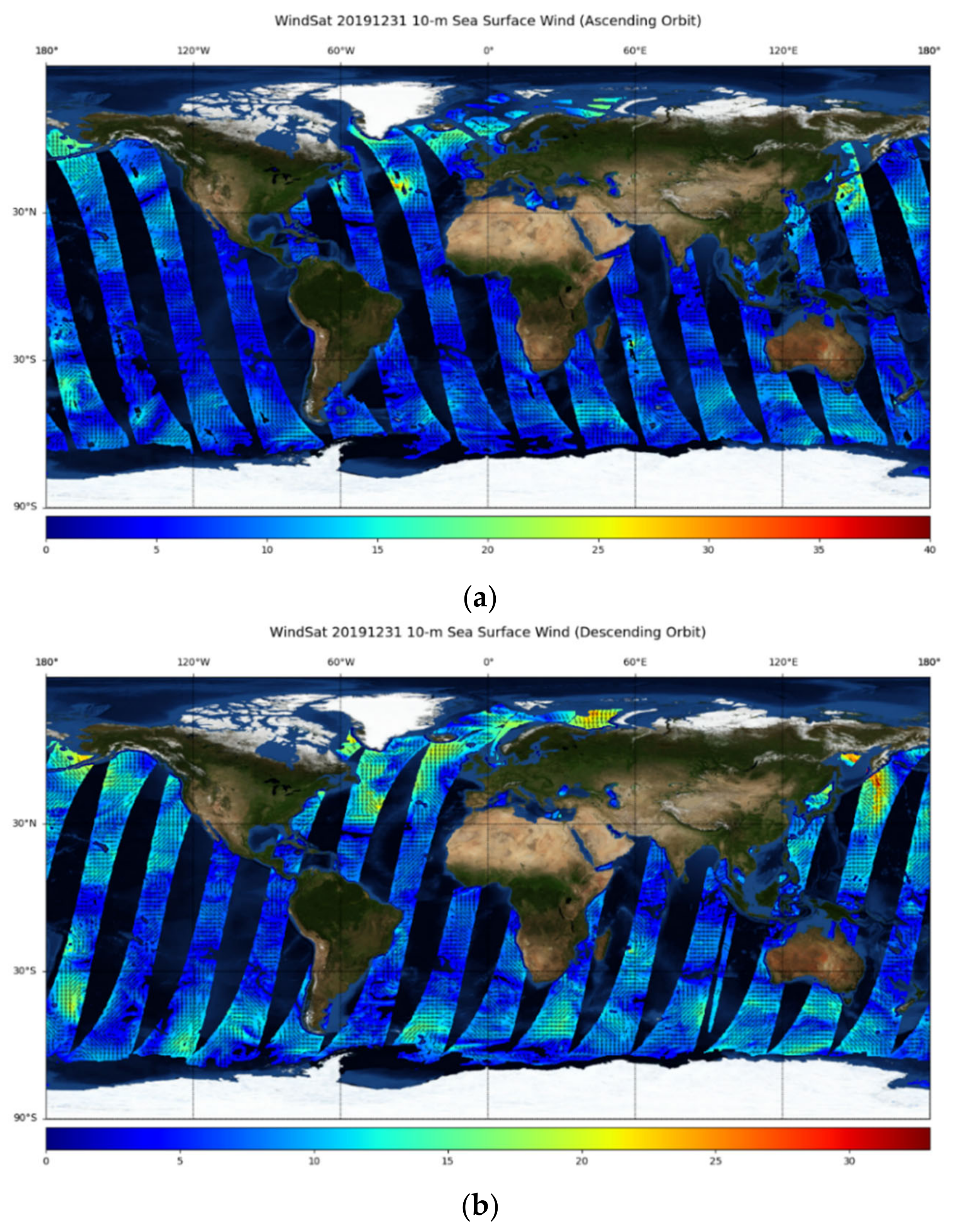

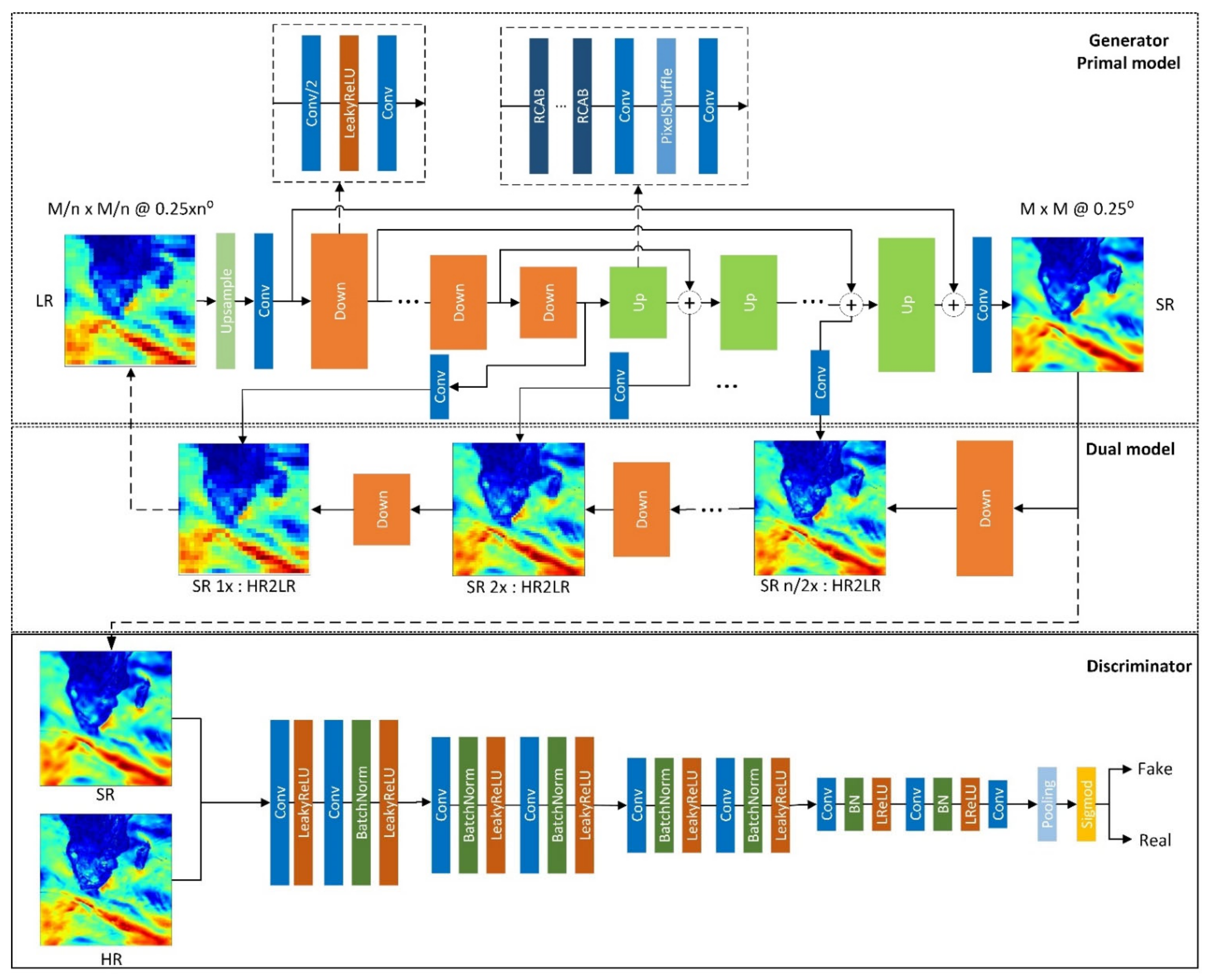
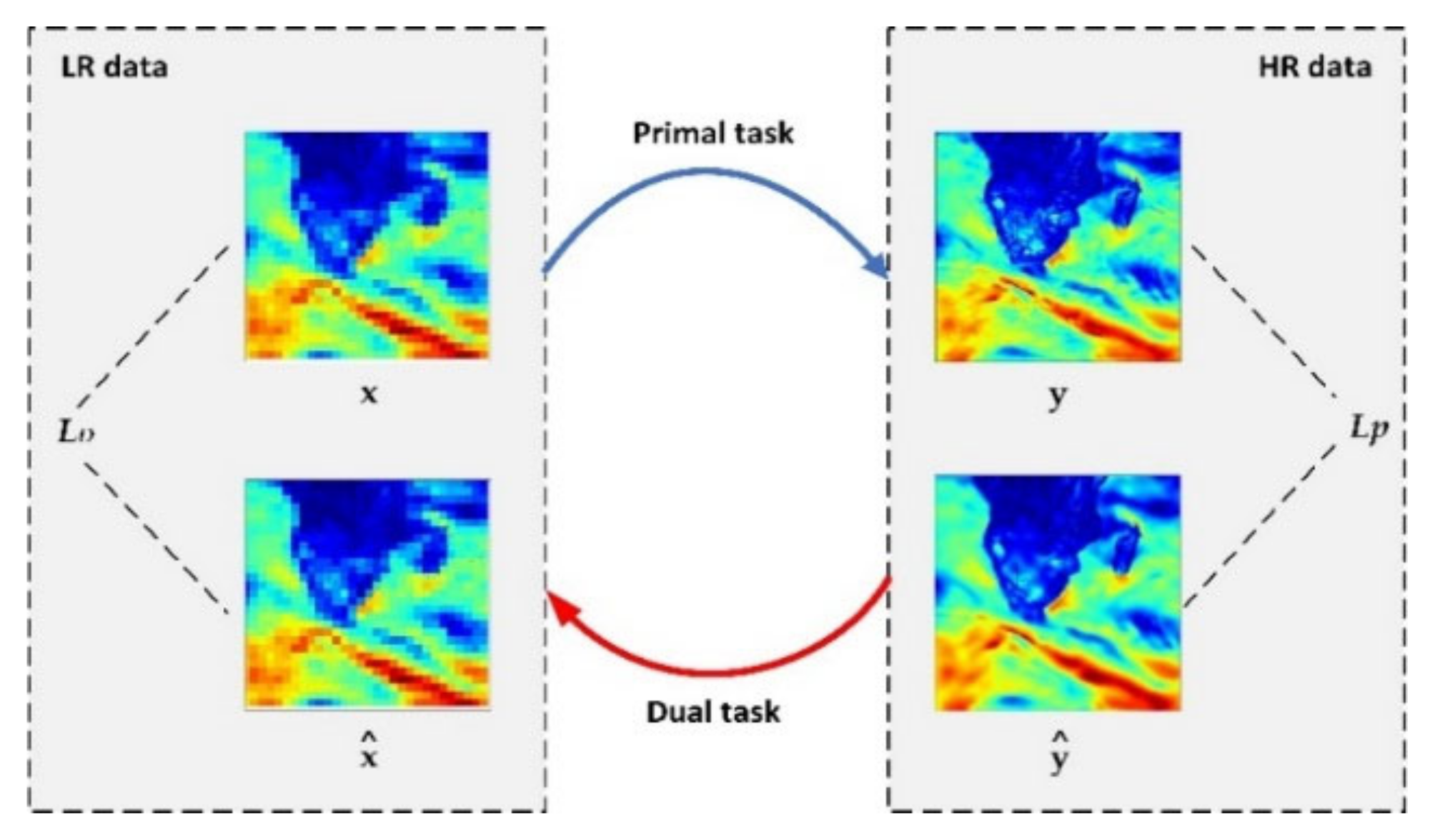
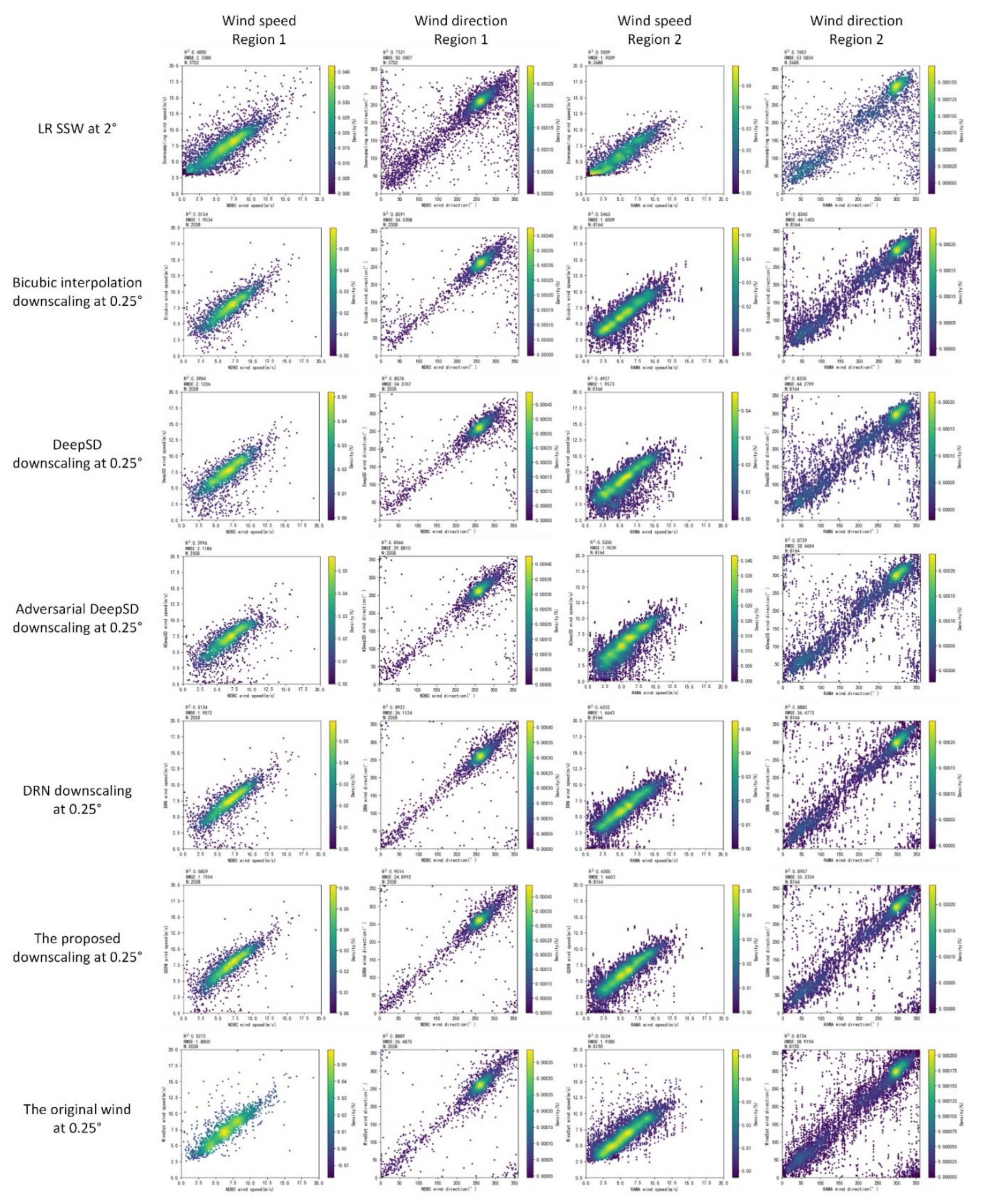
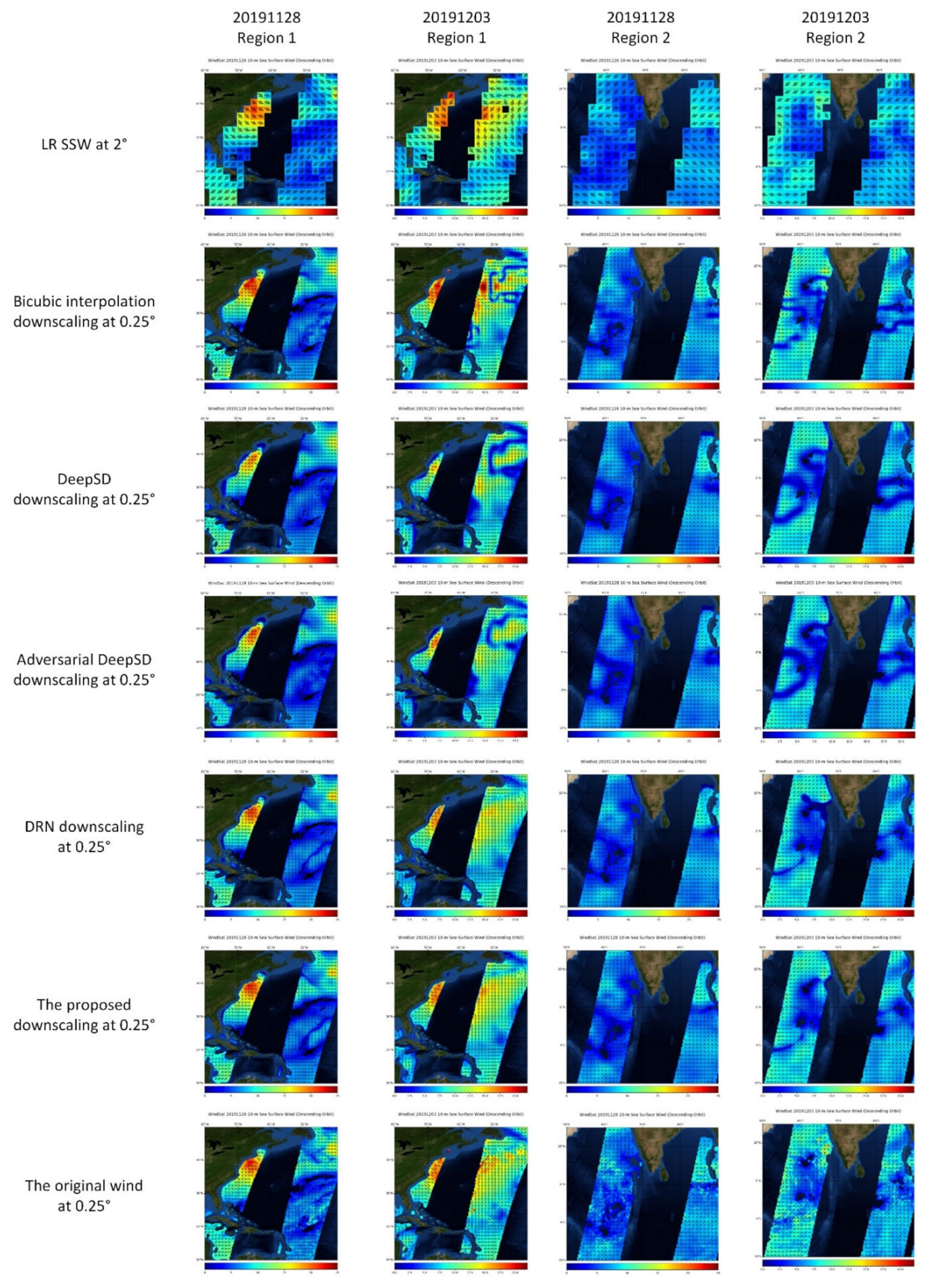



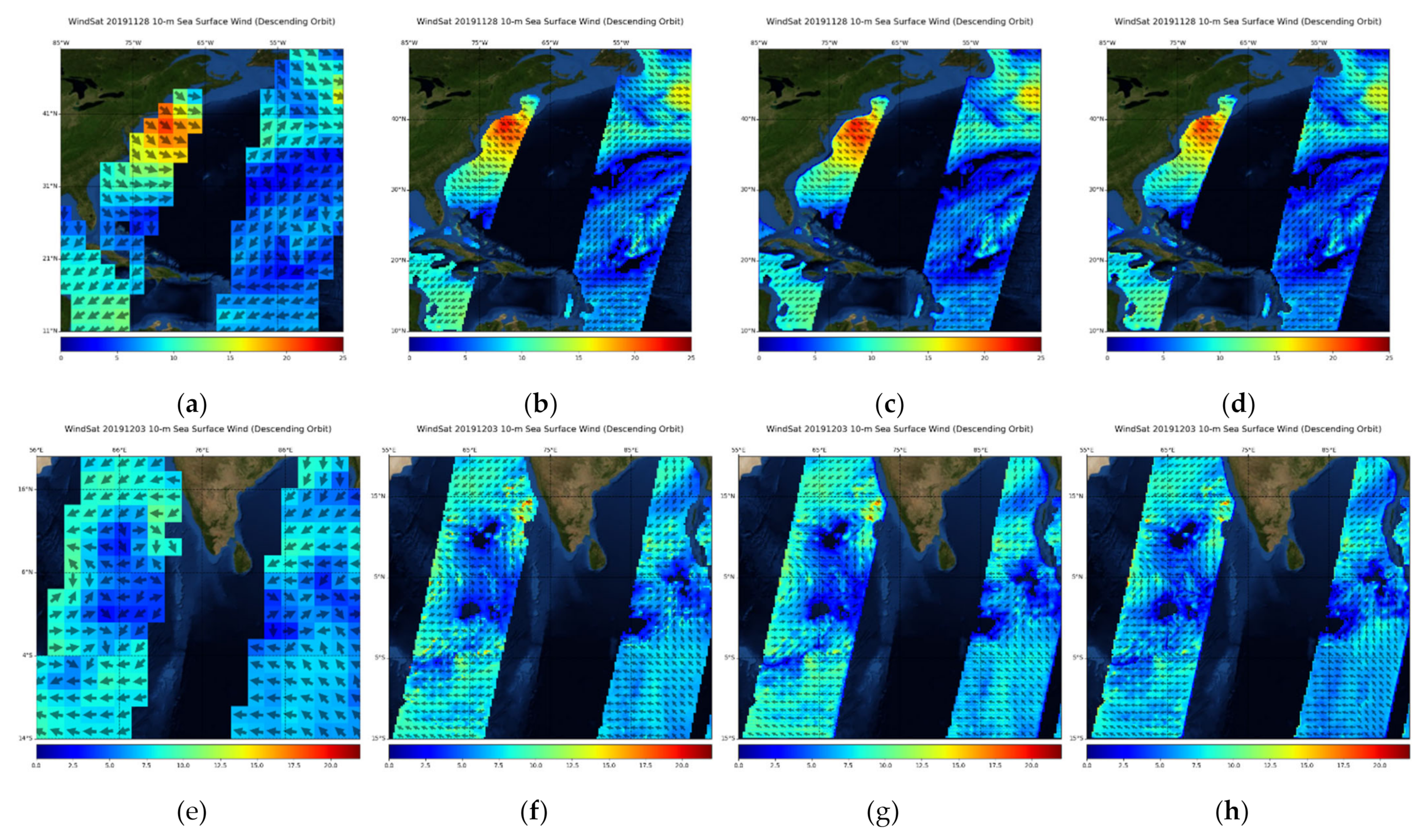
| Model | Model Details | Input Shape | Output Shape |
|---|---|---|---|
| Upsample | Upsample(16) | (3, h, w) | (3, 16h, 16w) |
| Head | Conv(3, 1, 1) | (3, 16h, 16w) | (1F, 16h, 16w) |
| Down 1 | Conv(3, 2, 1)-LeakyRelu-Conv(3, 1, 1) | (1F, 16h, 16w) | (2F, 8h, 8w) |
| Down 2 | Conv(3, 2, 1)-LeakyRelu-Conv(3, 1, 1) | (2F, 8h, 8w) | (4F, 4h, 4w) |
| Down 3 | Conv(3, 2, 1)-LeakyRelu-Conv(3, 1, 1) | (4F, 4h, 4w) | (8F, 2h, 2w) |
| Down 4 | Conv(3, 2, 1)-LeakyRelu-Conv(3, 1, 1) | (8F, 2h, 2w) | (16F, 1h, 1w) |
| Up 1 | B RCAs | (16F, 1h, 1w) | (16F, 1h, 1w) |
| Conv(3,1,1)-PixelShuffle(2) | (16F, 1h, 1w) | (16F, 2h, 2w) | |
| Conv(1, 1, 0) | (16F, 2h, 2w) | (8F, 2h, 2w) | |
| Concatenation 1 | Concatenate the output of Down 3 and Up 1 | (8F, 2h, 2w) ⊕ (8F, 2h, 2w) | (16F, 2h, 2w) |
| Up 2 | B RCAs | (16F, 2h, 2w) | (16F, 2h, 2w) |
| Conv(3,1,1)-PixelShuffle(2) | (16F, 2h, 2w) | (16F, 4h, 4w) | |
| Conv(1, 1, 0) | (16F, 4h, 4w) | (4F, 4h, 4w) | |
| Concatenation 2 | Concatenate the output of Down 2 and Up 2 | (4F, 4h, 4w) ⊕ (4F, 4h, 4w) | (8F, 4h, 4w) |
| Up 3 | B RCAs | (8F, 4h, 4w) | (8F, 4h, 4w) |
| Conv(3,1,1)-PixelShuffle(2) | (8F, 4h, 4w) | (8F, 8h, 8w) | |
| Conv(1, 1, 0) | (8F, 8h, 8w) | (2F, 8h, 8w) | |
| Concatenation 3 | Concatenate the output of Down 1 and Up 3 | (2F, 8h, 8w) ⊕ (2F, 8h, 8w) | (4F, 8h, 8w) |
| Up 4 | B RCAs | (4F, 8h, 8w) | (4F, 8h, 8w) |
| Conv(3,1,1)-PixelShuffle(2) | (4F, 8h, 8w) | (4F, 16h, 16w) | |
| Conv(1, 1, 0) | (4F, 16h, 16w) | (1F, 16h, 16w) | |
| Concatenation 4 | Concatenate the output of Head and Up 4 | (1F,16h, 16w) ⊕ (1F, 16h, 16w) | (2F, 16h, 16w) |
| Tail 0 | Conv(3, 1, 1) | (16F, 1h, 1w) | (3, 1h, 1w) |
| Tail 1 | Conv(3, 1, 1) | (16F, 2h, 2w) | (3, 2h, 2w) |
| Tail 2 | Conv(3, 1, 1) | (8F, 4h, 4w) | (3, 4h, 4w) |
| Tail 3 | Conv(3, 1, 1) | (4F, 8h, 8w) | (3, 8h, 8w) |
| Tail 4 | Conv(3, 1, 1) | (2F, 16h, 16w) | (3, 16h, 16w) |
| Dual 1 | Conv(3, 2, 1)-LeakyRelu-Conv(3, 1, 1) | (3, 16h, 16w) | (3, 8h, 8w) |
| Dual 2 | Conv(3, 2, 1)-LeakyRelu-Conv(3, 1, 1) | (3, 8h, 8w) | (3, 4h, 4w) |
| Dual 3 | Conv(3, 2, 1)-LeakyRelu-Conv(3, 1, 1) | (3, 4h, 4w) | (3, 2h, 2w) |
| Dual 4 | Conv(3, 2, 1)-LeakyRelu-Conv(3, 1, 1) | (3, 2h, 2w) | (3, 1h, 1w) |
| Model | Model Details | Input Shape | Output Shape |
|---|---|---|---|
| Block 1 | Conv(3, 1, 1) | (3, 16H, 16W) | (64, 16H, 16W) |
| LeakyReLU | (64, 16H, 16W) | (64, 16H, 16W) | |
| Conv(4, 2, 1) | (64, 8H, 8W) | (64, 8H, 8W) | |
| BatchNorm-LeakyReLU | (64, 8H, 8W) | (64, 8H, 8W) | |
| Block 2 | Conv(3, 1, 1) | (64, 8H, W) | (128, 8H, 8W) |
| BatchNorm-LeakyReLU | (128, 8H, 8W) | (128, 8H, 8W) | |
| Conv(4, 2, 1) | (128, 8H, 8W) | (128, 4H, 4W) | |
| BatchNorm-LeakyReLU | (128, 4H, 78) | (128, 4H, 4W) | |
| Block 3 | Conv(3, 1, 1) | (128, 4H, 4W) | (256, 4H, 4W) |
| BatchNorm-LeakyReLU | (256, 4H, 4W) | (256, 4H, 4W) | |
| Conv(4, 2, 1) | (256, 4H, 4W) | (256, 2H, 2W) | |
| BatchNorm-LeakyReLU | (256, 2H, 2W) | (256, 2H, 2W) | |
| Block 4 | Conv(3, 1, 1) | (256, 2H, 2W) | (512, 2H, 2W) |
| BatchNorm-LeakyReLU | (512, 2H, 2W) | (512, 2H, 2W) | |
| Conv(4, 2,1) | (512, 2H, 2W) | (512, H, W) | |
| BatchNorm-LeakyReLU | (512, H, W) | (512, H, W) | |
| Conv(4, 1, 1) | (512, H, W) | (1, H-1, W-1) | |
| Tail | AdaptiveAvgPool-Sigmoid | (1, H-1, W-1) | (1, 1) |
| Type | Resolution | Method | Component | Region 1 | Region 2 | ||
|---|---|---|---|---|---|---|---|
| RMSE | R2 | RMSE | R2 | ||||
| Original HR | 0.25° | Original HR | Direction | 26.49 | 0.89 | 38.92 | 0.87 |
| Speed | 1.88 | 0.53 | 1.94 | 0.50 | |||
| LR | 2° | Bicubic downsample 8× | Direction | 50.08 | 0.73 | 56.38 | 0.74 |
| Speed | 2.34 | 0.49 | 1.91 | 0.60 | |||
| Downscaling HR | 0.25° | Bicubic interpolation | Direction | 34.53 | 0.81 | 44.14 | 0.83 |
| Speed | 1.90 | 0.52 | 1.85 | 0.55 | |||
| DeepSD | Direction | 34.38 | 0.81 | 44.28 | 0.83 | ||
| Speed | 2.12 | 0.40 | 1.96 | 0.49 | |||
| Adversarial DeepSD | Direction | 29.88 | 0.86 | 38.66 | 0.87 | ||
| Speed | 2.12 | 0.40 | 1.90 | 0.52 | |||
| DRN | Direction | 26.11 | 0.89 | 36.48 | 0.89 | ||
| Speed | 1.91 | 0.51 | 1.66 | 0.63 | |||
| Proposed method | Direction | 24.90 | 0.90 | 35.23 | 0.90 | ||
| Speed | 1.76 | 0.59 | 1.66 | 0.63 | |||
| Method | PSNR | SSIM |
|---|---|---|
| Bicubic interpolation | 38.3350 | 0.9726 |
| DeepSD | 36.7467 | 0.9508 |
| Adversarial DeepSD | 36.6965 | 0.9570 |
| DRN | 39.4307 | 0.9771 |
| Proposed method | 39.9648 | 0.9805 |
| Type | Resolution | Method | Component | Region 1 | Region 2 | ||
|---|---|---|---|---|---|---|---|
| RMSE | R2 | RMSE | R2 | ||||
| LR Input | 0.25° | Original data | Direction | 26.49 | 0.89 | 38.92 | 0.87 |
| Speed | 1.88 | 0.53 | 1.94 | 0.50 | |||
| Downscaling HR | 0.25°/8 = 0.03125° | Bicubic interpolation | Direction | 26.07 | 0.90 | 38.71 | 0.88 |
| Speed | 1.82 | 0.57 | 1.96 | 0.49 | |||
| DeepSD | Direction | 29.44 | 0.87 | 42.48 | 0.85 | ||
| Speed | 2.21 | 0.36 | 2.16 | 0.38 | |||
| Adversarial DeepSD | Direction | 32.28 | 0.84 | 45.26 | 0.83 | ||
| Speed | 2.16 | 0.39 | 2.24 | 0.34 | |||
| DRN | Direction | 31.01 | 0.85 | 44.24 | 0.84 | ||
| Speed | 2.09 | 0.43 | 2.16 | 0.38 | |||
| Proposed model inference | Direction | 33.24 | 0.83 | 45.58 | 0.83 | ||
| Speed | 2.08 | 0.43 | 2.15 | 0.39 | |||
| Proposed model adaptation | Direction | 25.19 | 0.90 | 37.63 | 0.88 | ||
| Speed | 1.78 | 0.58 | 1.75 | 0.60 | |||
| 0.25°/16 = 0.015625° | Bicubic interpolation | Direction | 26.15 | 0.90 | 38.73 | 0.87 | |
| Speed | 1.81 | 0.57 | 1.95 | 0.50 | |||
| Proposed model adaptation | Direction | 25.22 | 0.90 | 37.98 | 0.88 | ||
| Speed | 1.62 | 0.65 | 1.77 | 0.58 | |||
| Resolution | Method | Parameters | FLOPs |
|---|---|---|---|
| 2° → 0.25° 0.25° → 0.03125° (8× downscaling) | Bicubic interpolation | 0 | 102.4 K |
| DeepSD | 207,825 | 16.4 G | |
| Adversarial DeepSD | |||
| DRN | 10,000,772 | 63.57 G | |
| Proposed method | |||
| 0.25° → 0.015625° (16× downscaling) | Bicubic interpolation | 0 | 409.6 K |
| Proposed model adaptation | 41,071,601 | 367.02 G |
| Model | Parameters | FLOPs |
|---|---|---|
| Dual model | 540 × n | 220 × n K |
| Discriminator | 7,134,401 | 187.42 M |
| Resolution | Method | Time (seconds/item) |
|---|---|---|
| 2° → 0.25° 8× downscaling input size of 3 × 180 × 90 | Bicubic interpolation | 1.29 |
| DeepSD | 1.31 | |
| Adversarial DeepSD | ||
| DRN | 1.38 | |
| Proposed method | ||
| 0.25° → 0.03125° 8x downscaling input size of 3 × 160 × 300 | Bicubic interpolation | 1.03 |
| DeepSD | 1.00 | |
| Adversarial DeepSD | ||
| DRN | 1.19 | |
| Proposed model inference | ||
| Proposed model adaptation | ||
| 0.25° → 0.015625° 16× downscaling input size of 3 × 160 × 300 | Bicubic interpolation | 3.24 |
| Proposed model adaptation | 5.02 |
Publisher’s Note: MDPI stays neutral with regard to jurisdictional claims in published maps and institutional affiliations. |
© 2022 by the authors. Licensee MDPI, Basel, Switzerland. This article is an open access article distributed under the terms and conditions of the Creative Commons Attribution (CC BY) license (https://creativecommons.org/licenses/by/4.0/).
Share and Cite
Liu, J.; Sun, Y.; Ren, K.; Zhao, Y.; Deng, K.; Wang, L. A Spatial Downscaling Approach for WindSat Satellite Sea Surface Wind Based on Generative Adversarial Networks and Dual Learning Scheme. Remote Sens. 2022, 14, 769. https://doi.org/10.3390/rs14030769
Liu J, Sun Y, Ren K, Zhao Y, Deng K, Wang L. A Spatial Downscaling Approach for WindSat Satellite Sea Surface Wind Based on Generative Adversarial Networks and Dual Learning Scheme. Remote Sensing. 2022; 14(3):769. https://doi.org/10.3390/rs14030769
Chicago/Turabian StyleLiu, Jia, Yongjian Sun, Kaijun Ren, Yanlai Zhao, Kefeng Deng, and Lizhe Wang. 2022. "A Spatial Downscaling Approach for WindSat Satellite Sea Surface Wind Based on Generative Adversarial Networks and Dual Learning Scheme" Remote Sensing 14, no. 3: 769. https://doi.org/10.3390/rs14030769
APA StyleLiu, J., Sun, Y., Ren, K., Zhao, Y., Deng, K., & Wang, L. (2022). A Spatial Downscaling Approach for WindSat Satellite Sea Surface Wind Based on Generative Adversarial Networks and Dual Learning Scheme. Remote Sensing, 14(3), 769. https://doi.org/10.3390/rs14030769






